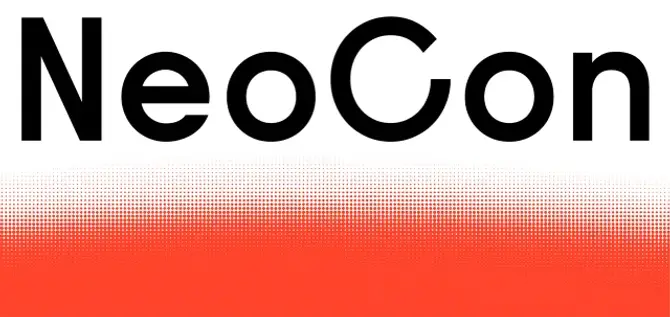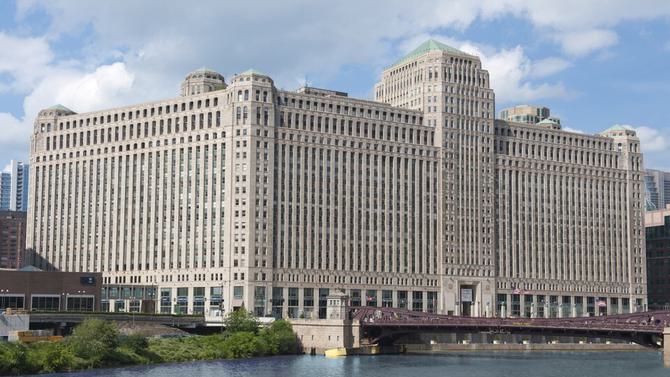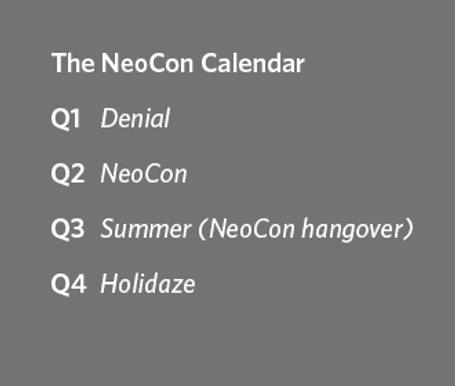
Peopledesign
The Built Environment
Furniture
Lighting
Textiles/Upholstery
Flooring/Carpet
Building Materials
AE Firms
Beyond NeoCon
Beyond NeoCon
Thinking beyond NeoCon and the boundaries of the current market.
“More and more furniture coming on the market blurs the distinction between home and office.” Forward-looking and on-trend, this sentiment echoes the co-working phenomenon, perhaps best illustrated by WeWork and the emergence of “resimerical” as a term. The only trouble is that this was reported by the New York Times in 1986.
This June, the National Exposition of Contract Furnishings, NeoCon, will commence in Chicago. For half a century, the industry trade show features providers of furniture, fabrics, flooring, interior building products, finishes, and technology for workplaces. This year’s event boasts 500 companies and 50,000 design professionals. It is the largest trade show of its kind in North America.

For the industry to evolve, we need to think bigger. We have to think beyond June, Chicago, NeoCon, and the boundaries of the current market.
Show vs. Showroom
The show takes place in the Merchandise Mart, a hulking labyrinth of a building with art deco stylings serving as an all-in-one skyscraper, warehouse, and shopping mall. When it opened in 1930, the Mart was the largest building in the world in total area. It had its own ZIP code until 2008.
The building has hosted NeoCon since 1969 and is the home of many of the industry’s Midwest showrooms today. This dynamic challenges built environment companies as they try to balance the show's needs versus those of a showroom the rest of the year. They are compelled to be at the show and often use the effort to refresh their showroom simultaneously. The split between showing the new product experience versus best seller demonstrations creates a shuffle before and after the show.

Chicago Merchandise Mart
The layout of the building is awkward for a trade show. It wasn’t designed to be an expo space, and compromises were made to accommodate the flow of thousands of people during NeoCon. Some elevators go up; others come down. Some floors have showrooms; some do not. There is a lot of standing in line, finding stairways and bathrooms, and looking for food. It’s hard to blame the building or its owners, who have made improvements over the years. Still, for an industry centered on the design of the built environment, it’s not a great customer experience.
The key showrooms in the Mart are permanent, so the roster of exhibitors doesn’t change too often. Temporary spaces are available for smaller companies or those seeking a smaller footprint. There is always jostling for position, but the industry is pretty small when it comes down to it. Many people have worked for more than one of the players. Competitors are well known, and there are few surprises.
Maximizing NeoCon
NeoCon exhibitors invest millions in hard-earned profits into a show with a questionable return. In some industries, trade shows directly result in sales. Others, including NeoCon, are more about industry PR and team building.
Trade PR can be like shooting fish in a barrel. The usual suspects angle for visibility from a handful of media sources. NeoCon features award-winning products, signifying achievements and making industry news. Too much emphasis here can be like talking to ourselves. However, NeoCon is a story that can create noise beyond the market.
Many industry players have adopted a “Front of the House, Back of the House” strategy. The “front” of the house features what you’d expect at a show — new products and promotions, smiling salespeople willing to perform demos and take names. The “back” of the house includes events targeting salespeople and specific customers. The event is often one of the few times all salespeople, dealers, and reps are in the same place, which makes it convenient to hold annual sales meetings, conduct training, and celebrate. Some showrooms feature front and back sections, whereby even during the show, “back room” client meetings only happen by appointment. This dual approach is a way exhibitors can maximize their NeoCon investments.
NeoCon is given too much emphasis in the industry. Trade show booths that also function as showrooms and a desire for industry PR result in a pattern of overspending. Moreover, it distracts leaders from healthier, more holistic approaches.
Break the Cycle
What would happen if a competitor didn’t show up for NeoCon? Do customers care? Discussions about boycotting the event have occurred at high and low levels for decades, probably annually, but most companies are compelled to show up. In some ways, NeoCon has become an elaborate game of chicken — no one wants to blink. No major company has been willing or able to buck the system, as Apple famously turned its back on CES. Creating enough noise on your own is hard.
There is movement. Some companies, even well-known ones, are migrating part or all of their showrooms out of the Mart to nearby places, including DIRTT, Trendway, Kimball, Interface, and most recently, Knoll. While they haven’t gone far (usually across the street), the signal is clear: These companies prioritize the showroom over the show. It’s a healthy step.
NeoCon is vital in the industry — a global focal point as leading companies introduce new products and services into the marketplace. However, as companies seek new areas for growth, the market is becoming more fragmented. A renewed focus on end customer segments beyond the office and global outreach may shift the center of gravity from Chicago in June.
Event marketing is changing. What is a marketing website today if not a 24/7/365 show? Even with the rise of digital communications, in-person events remain a draw. The popularity of In-person events aligns with the rate of change and the need for more information. They also offer human contact when our smartphones fall short.
These factors add to renewed energy for shows targeting healthcare, education, hospitality, retail, and residential markets, such as ICFF, BDNY, HD Expo, Healthcare Design, and more.
The NeoCon World Trade Fair, as it is now known, is mostly North American-based companies. NeoCon is a global event, but the pull to become more global is having an impact. European shows like Orgatech and Clerkenwell Design Week are becoming more visible. Not to mention all of Asia, which, like CIFF in China, can easily outpace shows in the U.S., at least by scale.
Over the years, many have adopted what we’ll call The NeoCon Calendar. Overemphasizing the show creates a ramp to hyperactivity in the first part of the year, followed by malaise in the following months.

The NeoCon Calendar
We’ve worked with built environment companies for over twenty years, and often coach them to consider a new calendar. Don’t put off NeoCon planning, panic, and then go mandatory R&R. Instead, proactively offset the NeoCon 800-pound gorilla. Create a countercyclical strategy mapping out specific efforts in Q1 and Q3, and budget accordingly. A better calendar would plan for other shows, targeting product launches and campaigns that don’t blow your budget in one go. Take a more measured approach to ROI, systems, and long-term thinking.
Retailers live by holiday tentpoles, and they create more every day. It’s another way that B2B companies can learn from B2C companies. We can think of another reason to celebrate beyond NeoCon, right?
Think Bigger
Change is hard. Breaking patterns can take a 12-step program and much grit. We encourage our clients to deliberately position themselves to move away from the crowd and become more different. Resimercial is a current trend in built environments, but it was also yesterday’s. We live in an era of significant change, and companies that adapt will survive.
How will the sharing economy affect the built environment? Will WeWork disrupt manufacturers in the same way Uber and Lyft are disrupting taxi services, or will Airbnb disrupt hotels? Who will be the beneficiary?
Will niche providers redefine what it means to be in this space? Healthcare is already one-sixth of the economy. Stryker used to make tables; now, it’s several times the size of any single furniture maker in the market.
What role will technology play? Digital transformation should be on everyone's mind.
Change can be scary, but it’s also exciting. Let’s think beyond NeoCon about what’s ahead and where we want our companies to be. What will they say about this time in another 50 years, at the NeoCon Centennial? Let’s not tell the same story in a new package.